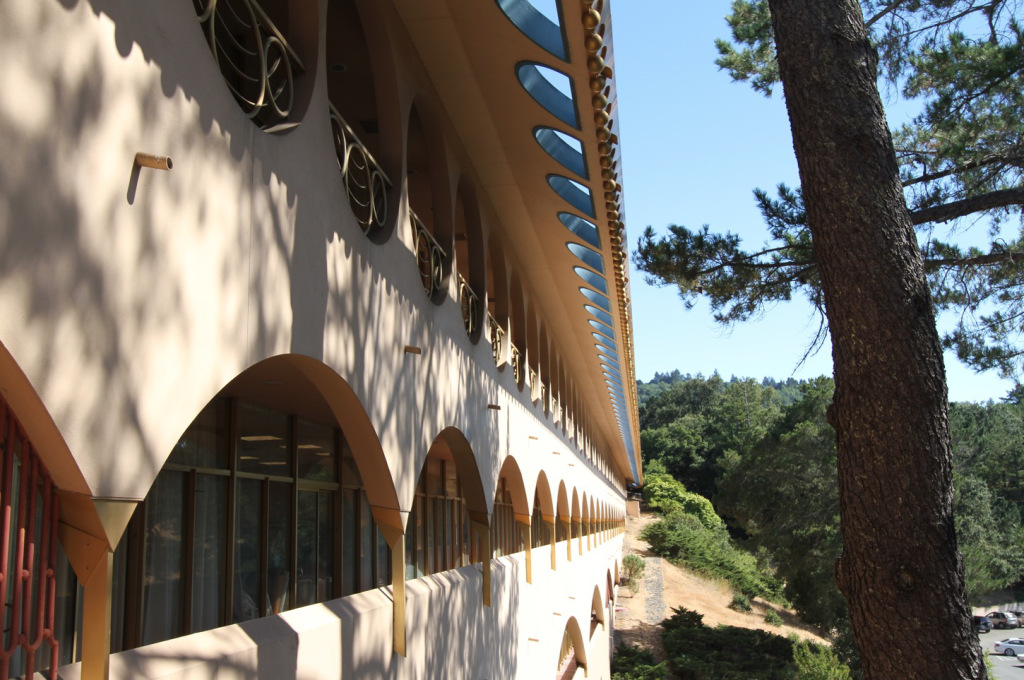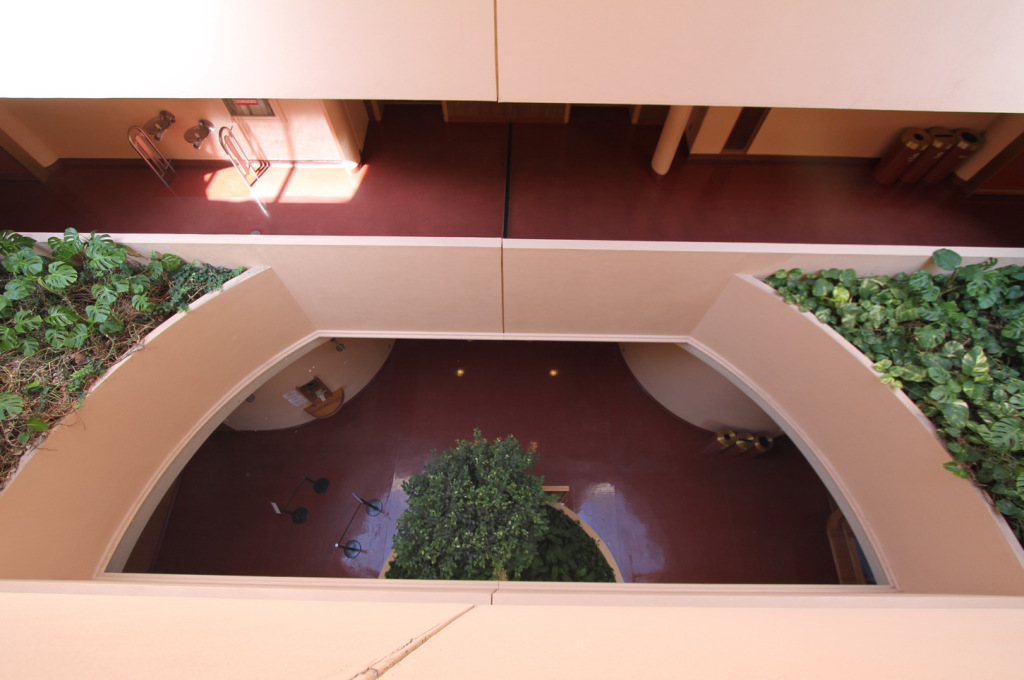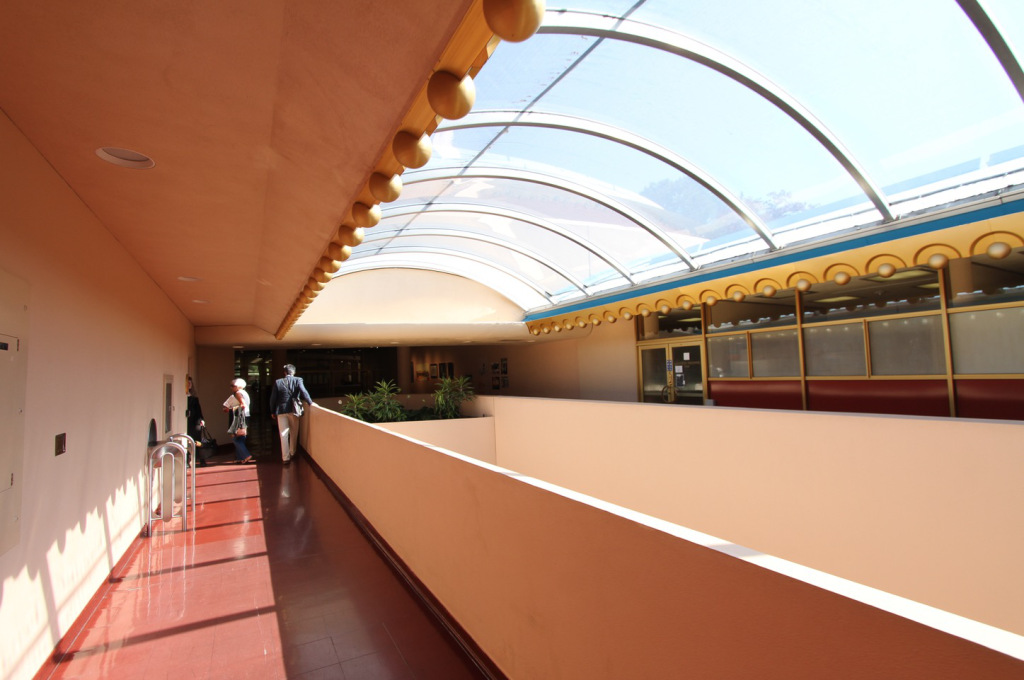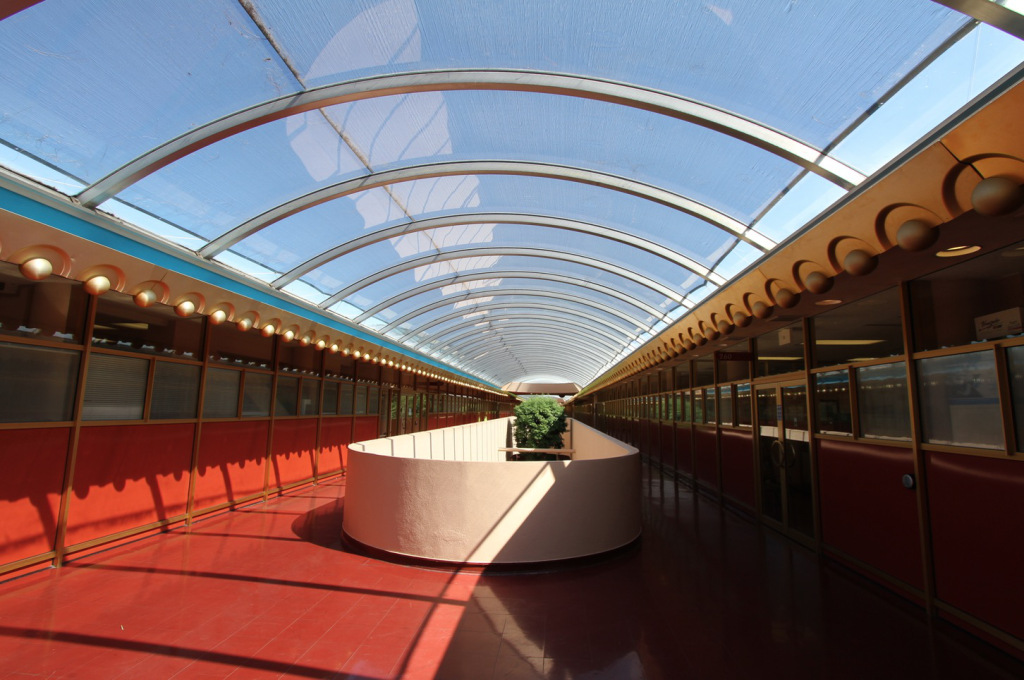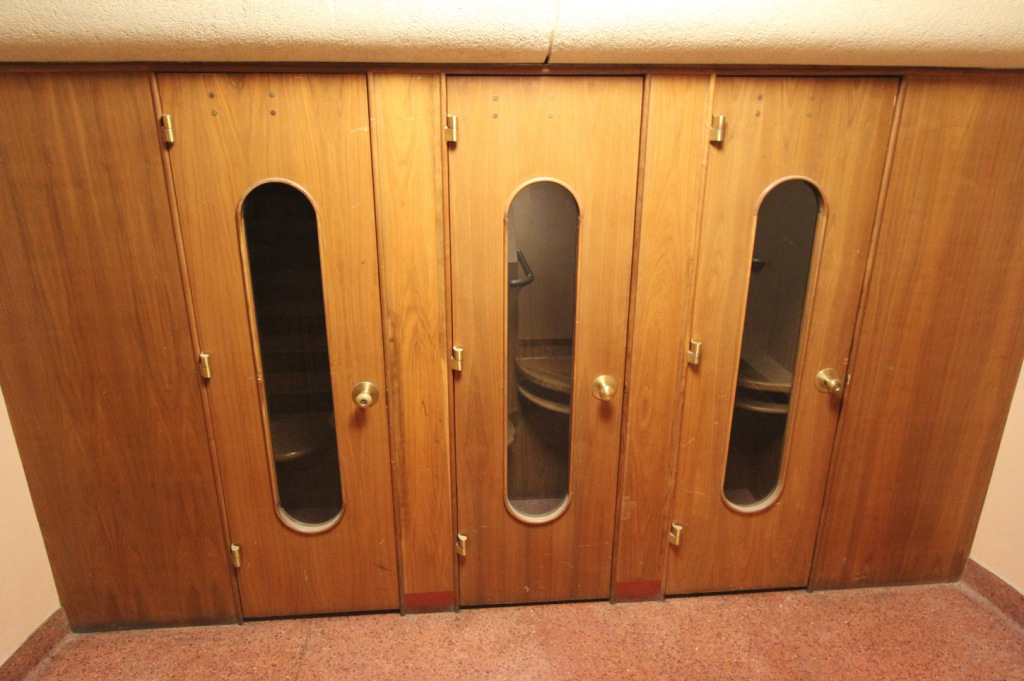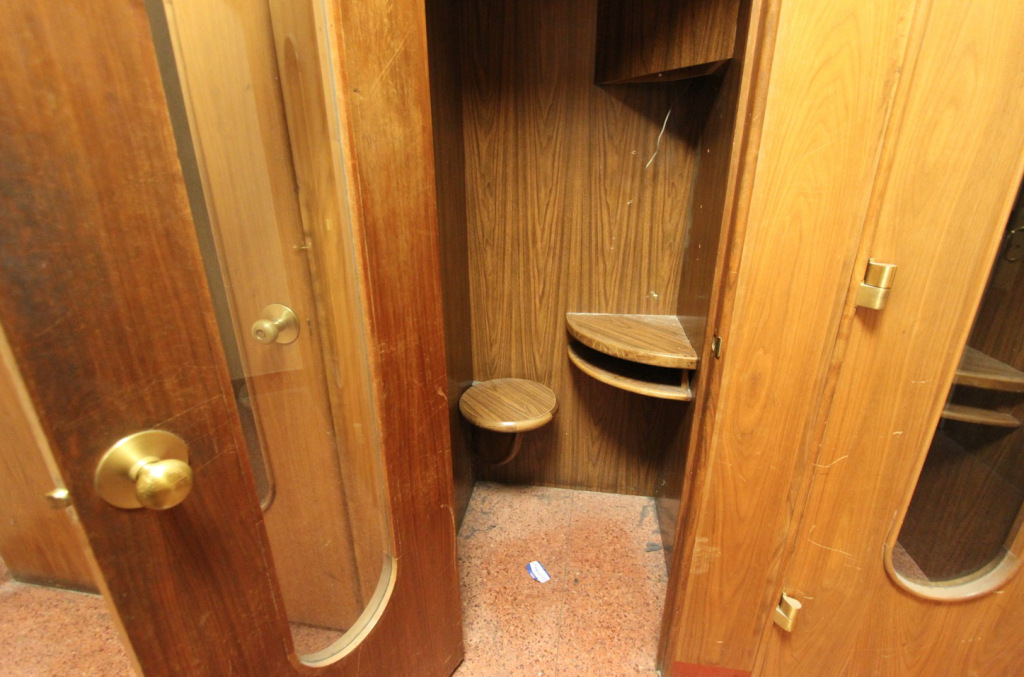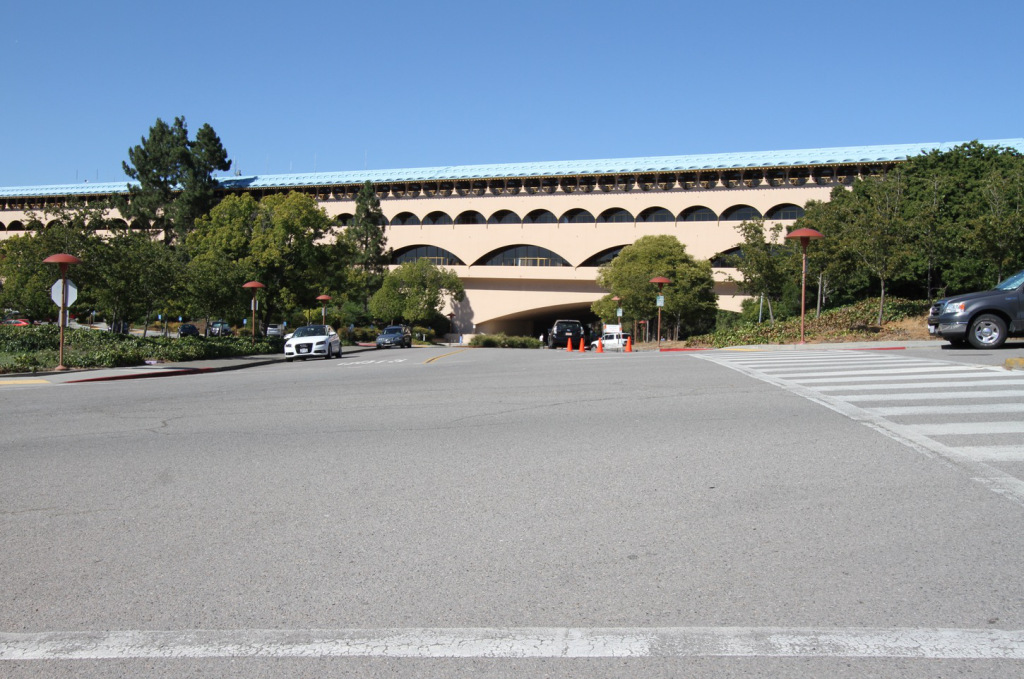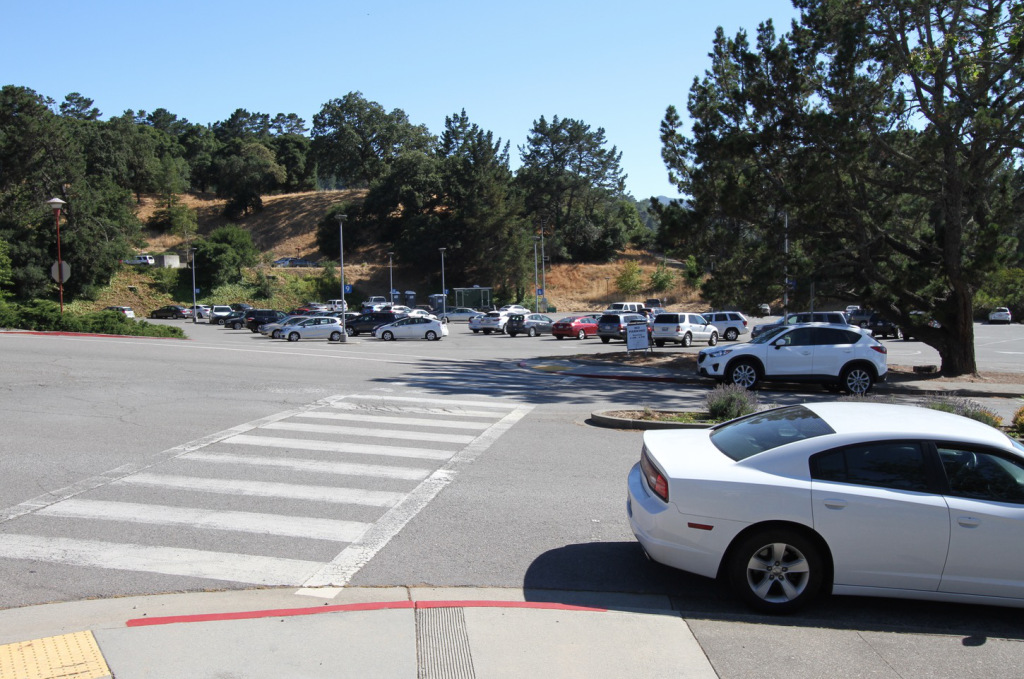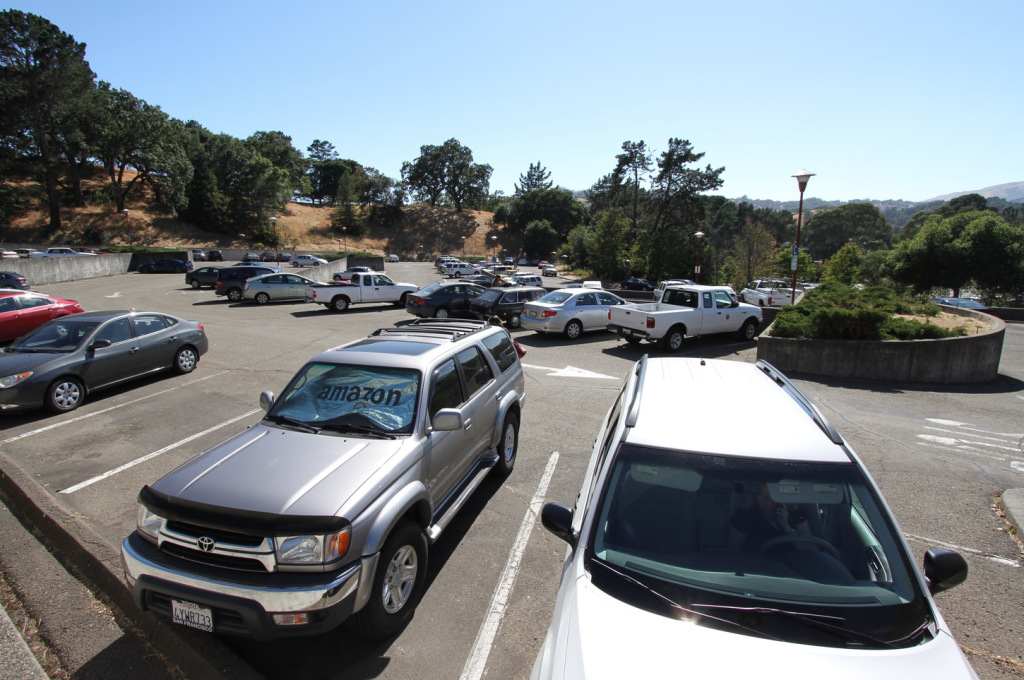Yesterday's Visions of Tomorrow
Frank Lloyd Wright’s Marin County Civic Center has always been one of my favorite buildings.
It isn’t simply the elegant structure that appeals to me, but rather the uncompromised expression of an entire era and its prevailing ethos. More than any other building this government complex embraces the optimistic spirit, technology, and economic dynamics of the post World War II suburban experiment in a way that’s utterly different from the Greco Roman courthouse and library temples that had proceeded it. It’s bold, unapologetically broad, and open. It embraces nature and folds itself in to the landscape blurring the lines between inside and out.
The design draws heavily from Wright’s 1932 Broadacre City concept of a dispersed land use pattern in which buildings were set far apart from each other and connected by extensive road networks. Nature was to be preserved while knowledge and high culture were freed from congested and polluted urban centers and brought out to the countryside via radio – and later television.
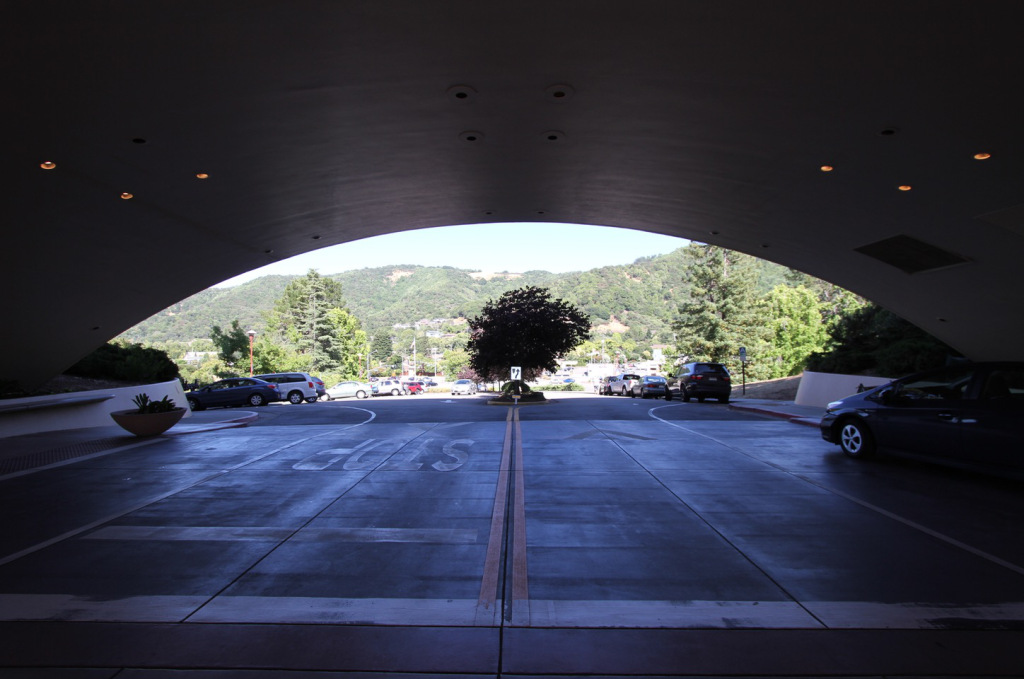
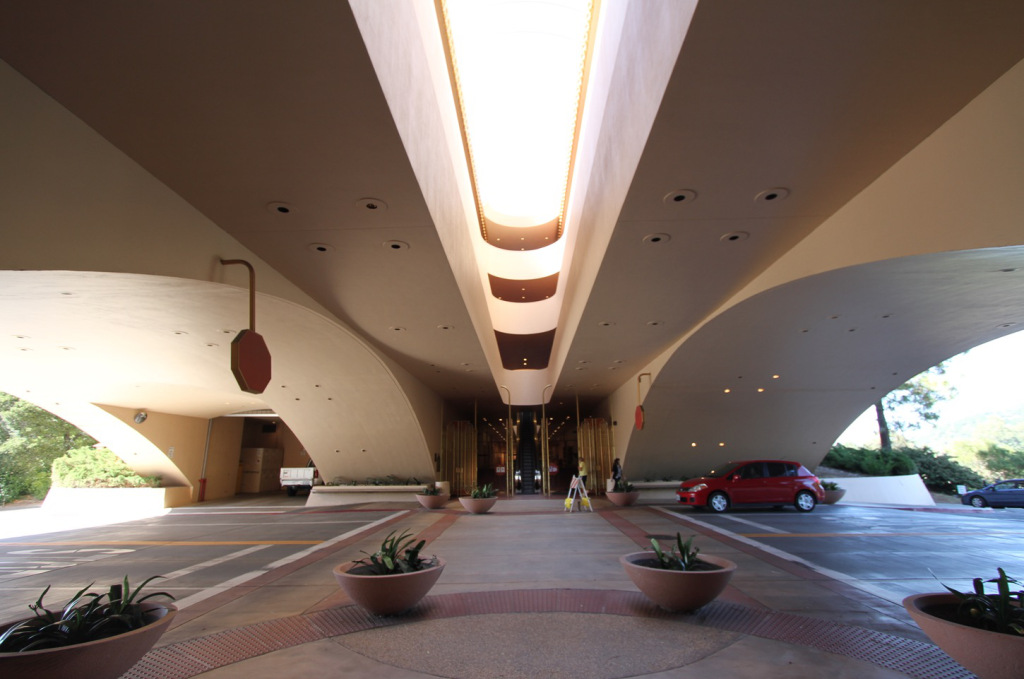
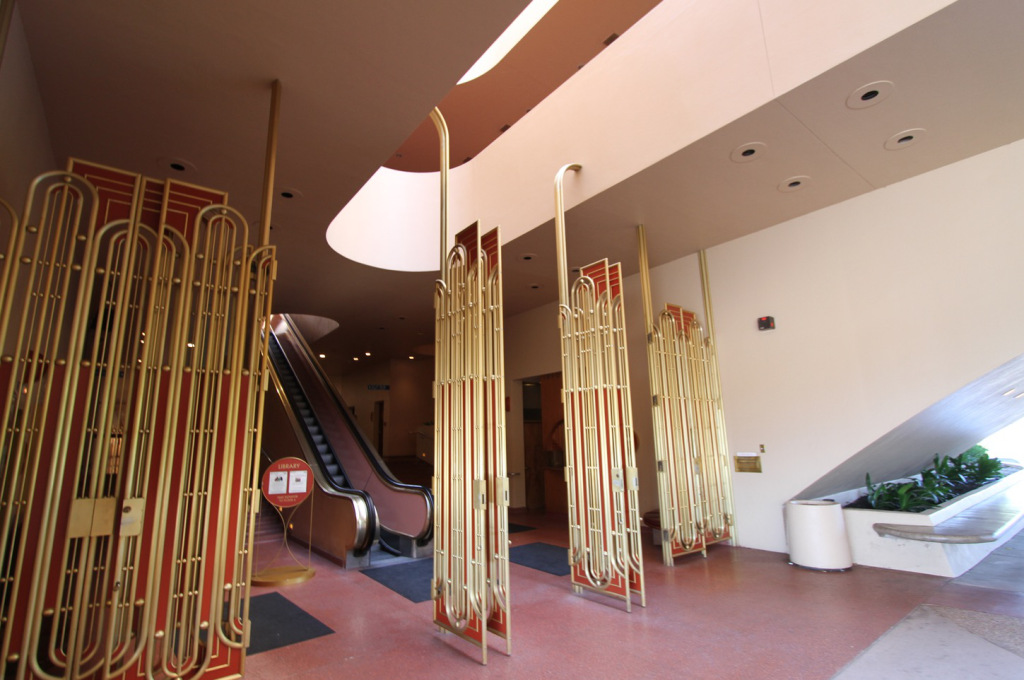
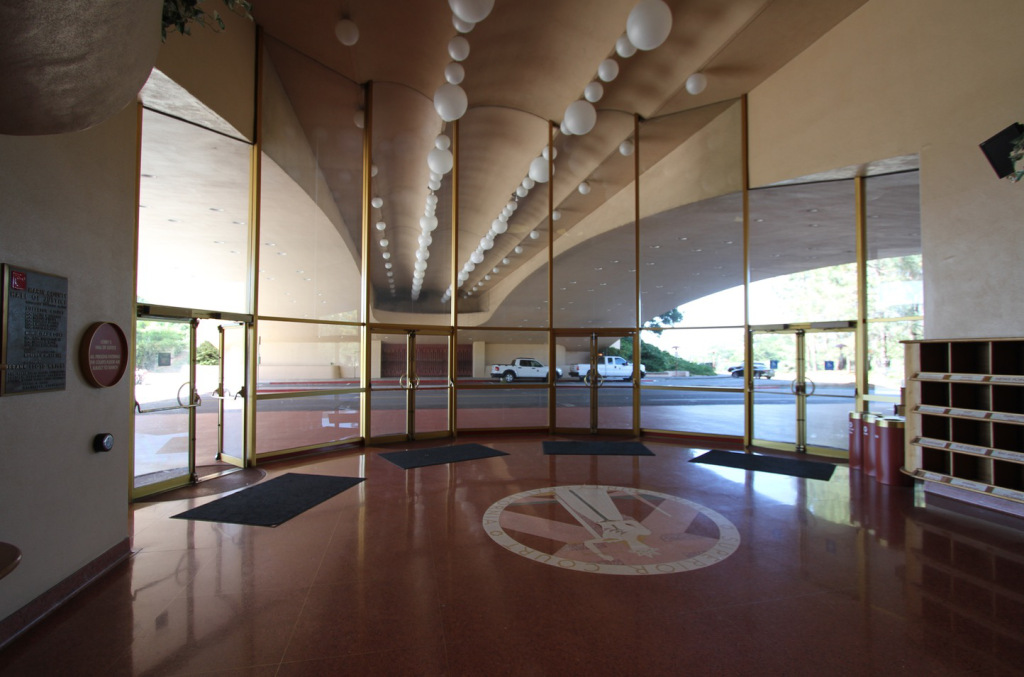
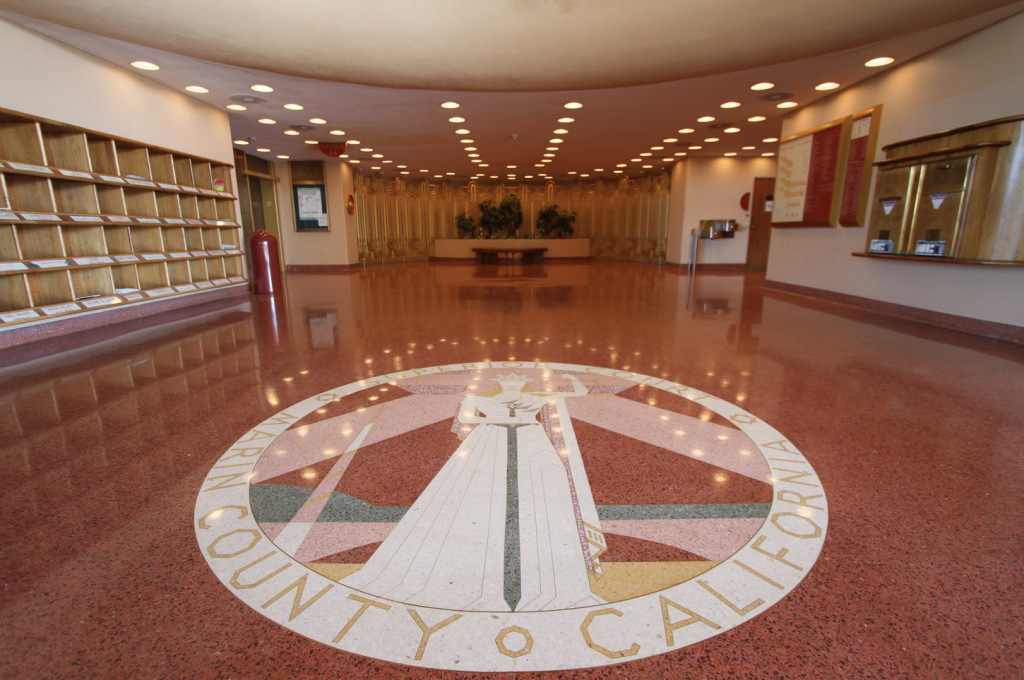
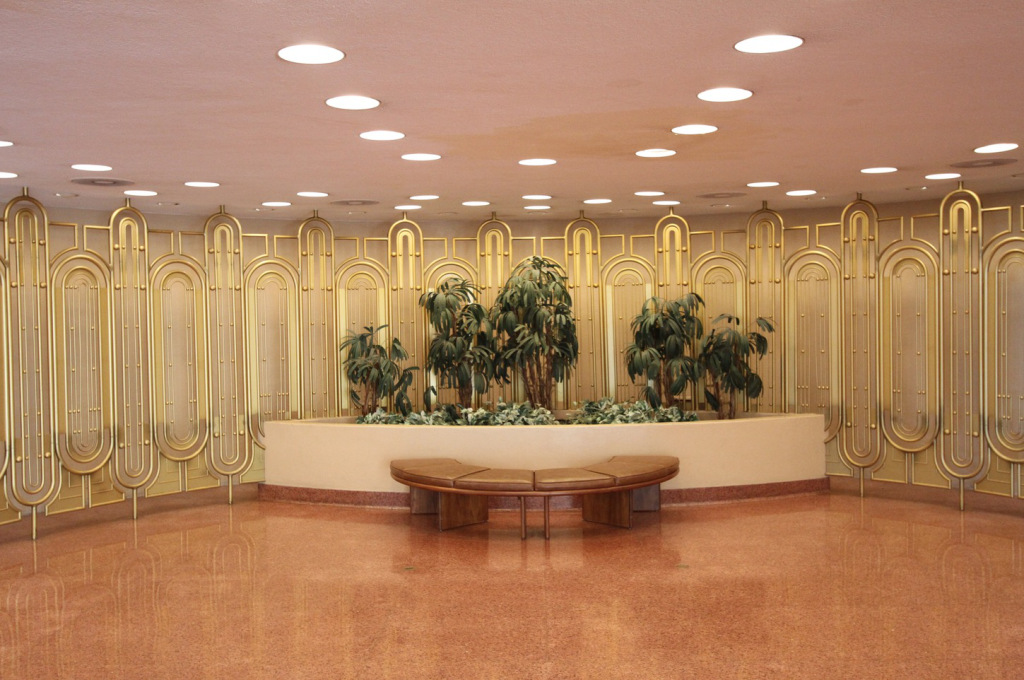
There is no singular entry point to the building. Its vast horizontal wings stretch across three hillsides with multiple arched porticos that draw people in from below.
It doesn’t matter much how members of the public or employees wander in, because the interior is one long continuous ribbon. The shopping mall analogy is self evident and was expressly stated by Wright. Government was meant to be as transparent and accessible as possible.
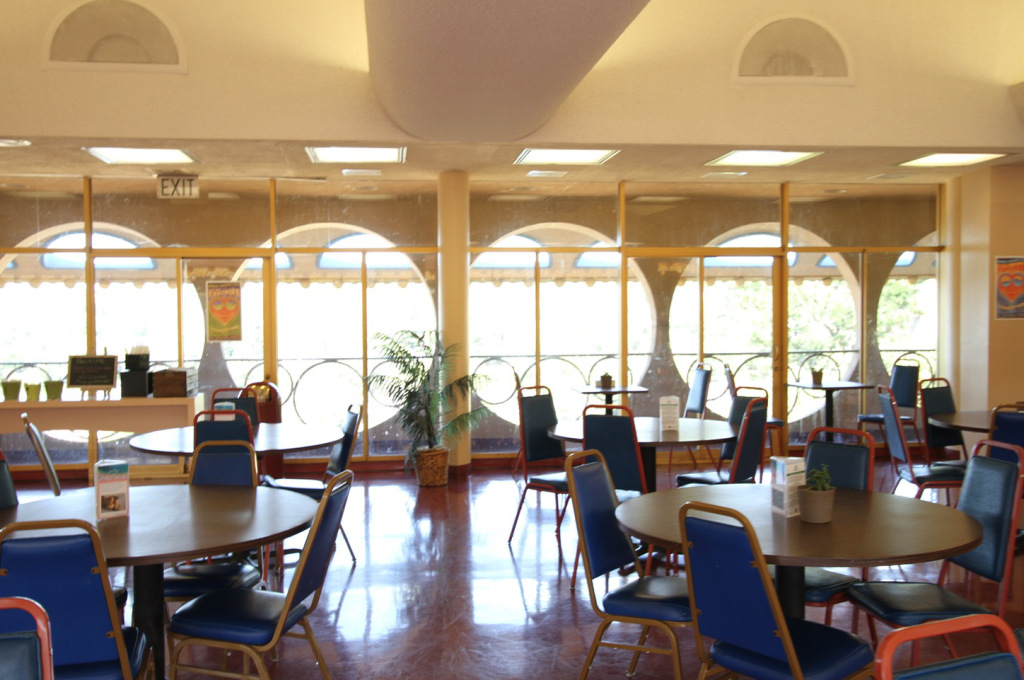
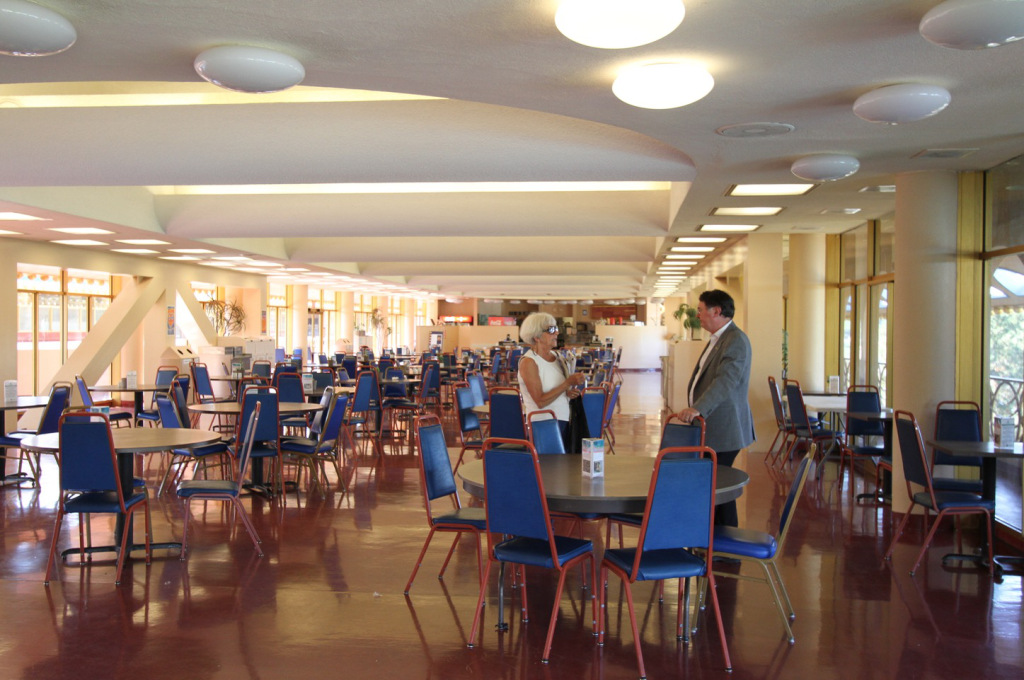
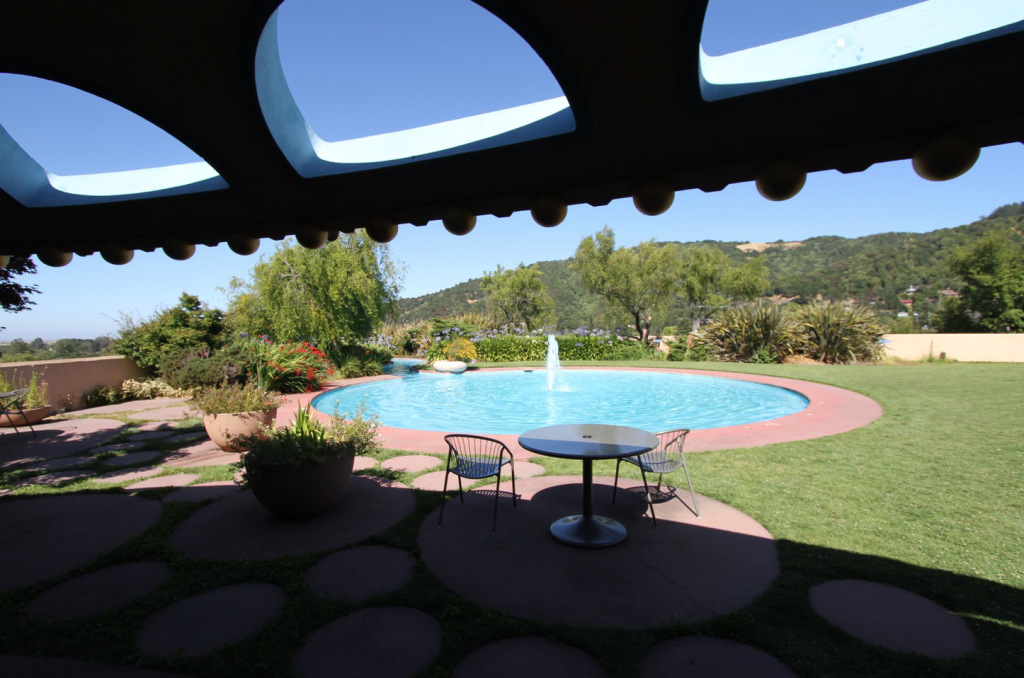
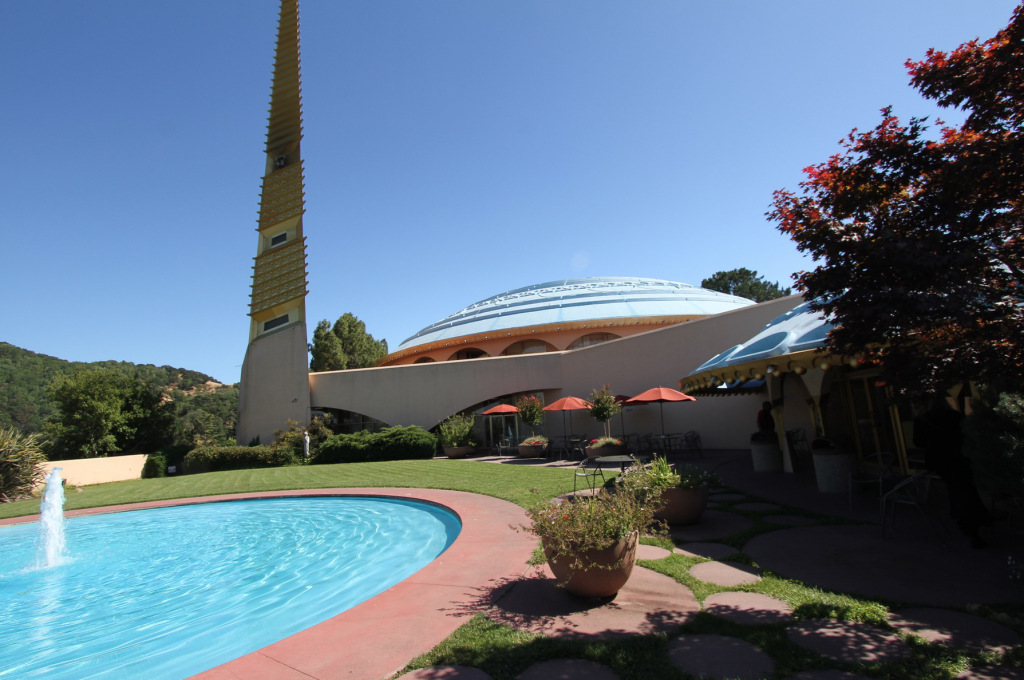
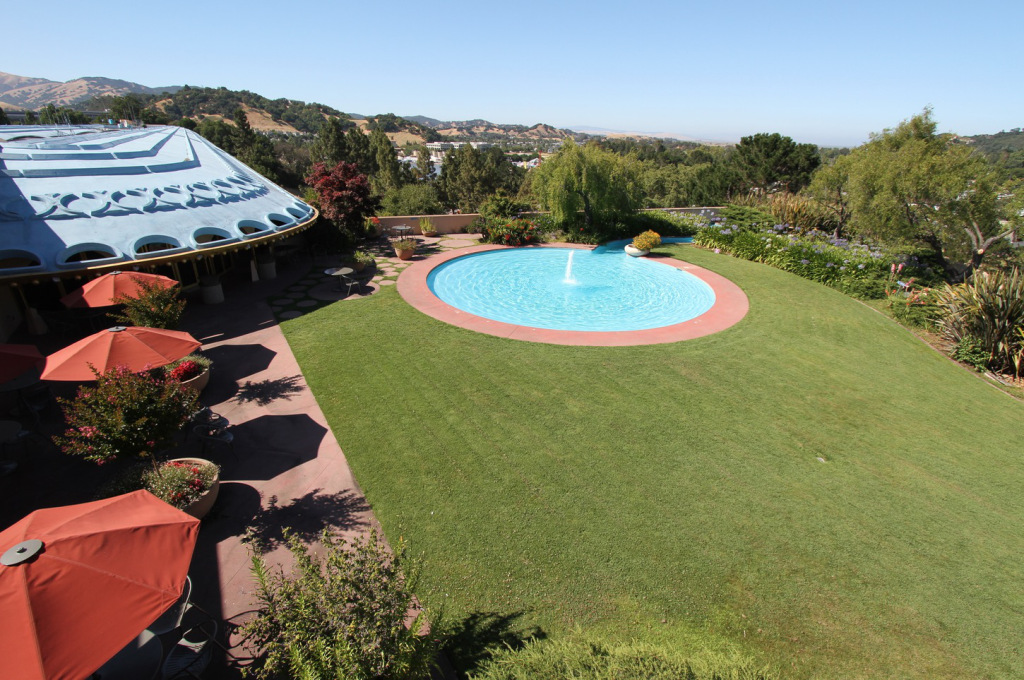
The cafeteria and adjoining patio and manicured lawn overlook the hillsides of Marin County as well as the central rotunda of the library. I’ve often described it as the world’s most extravagant Howard Johnson’s. You’ll never find orange Formica and gold anodized aluminum look so regal anyplace else. The garden is surprisingly intimate and domestic for a public building and mimics the country club atmosphere and gracious private homes of the surrounding wealthy suburbs.
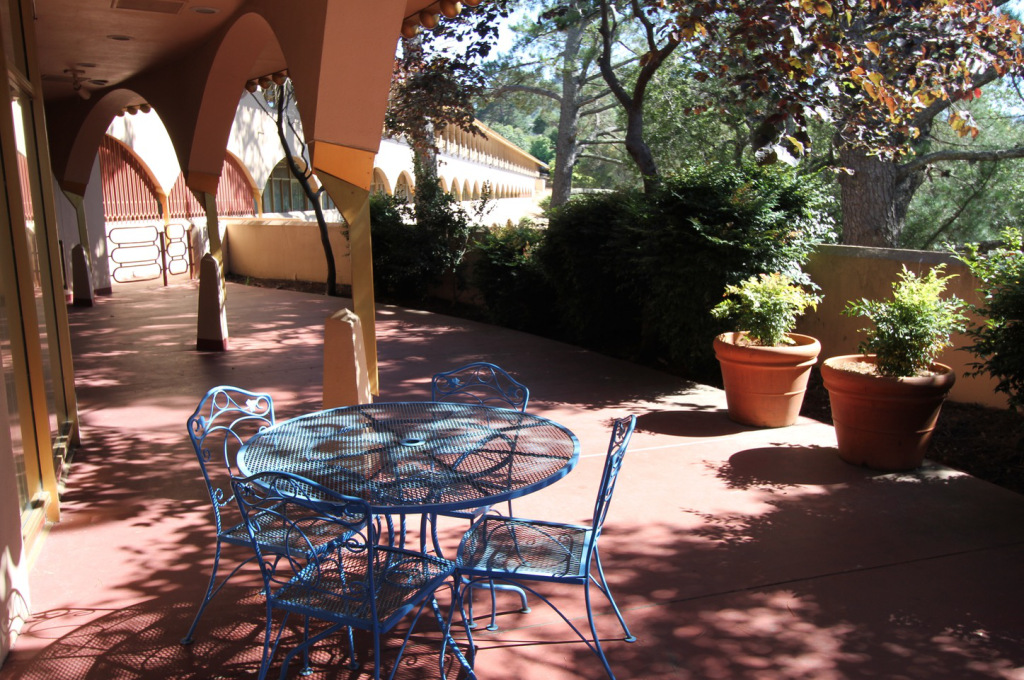
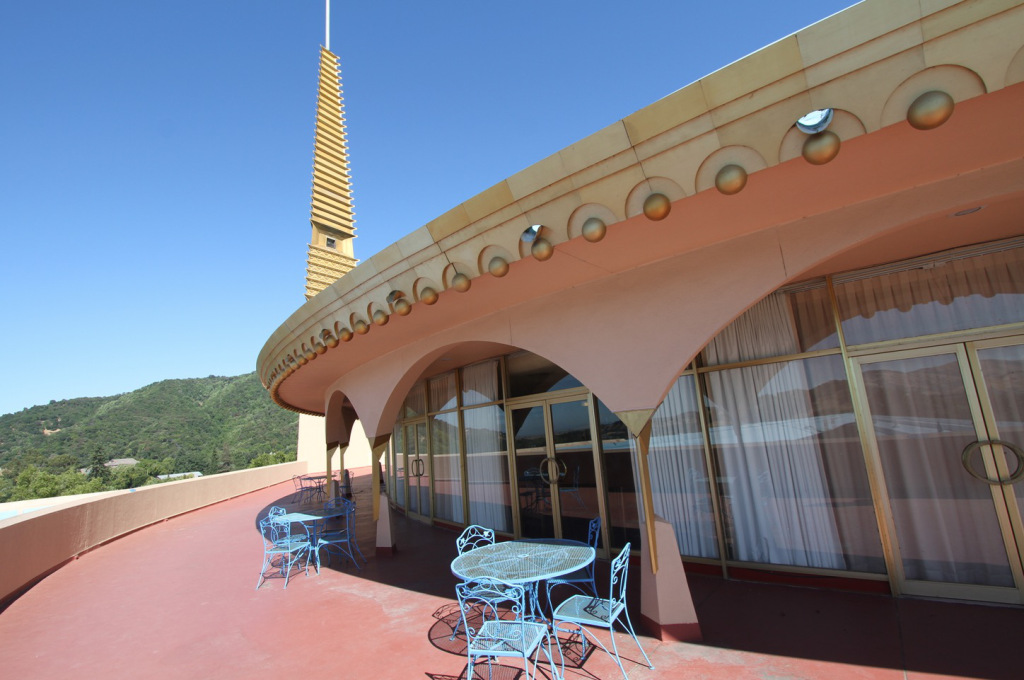
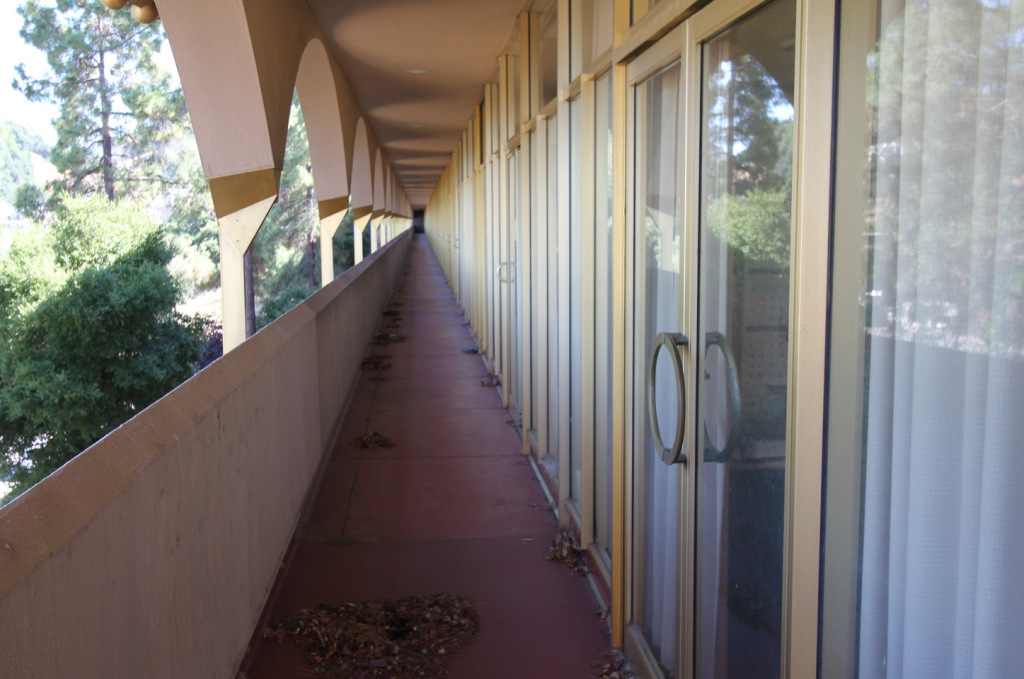
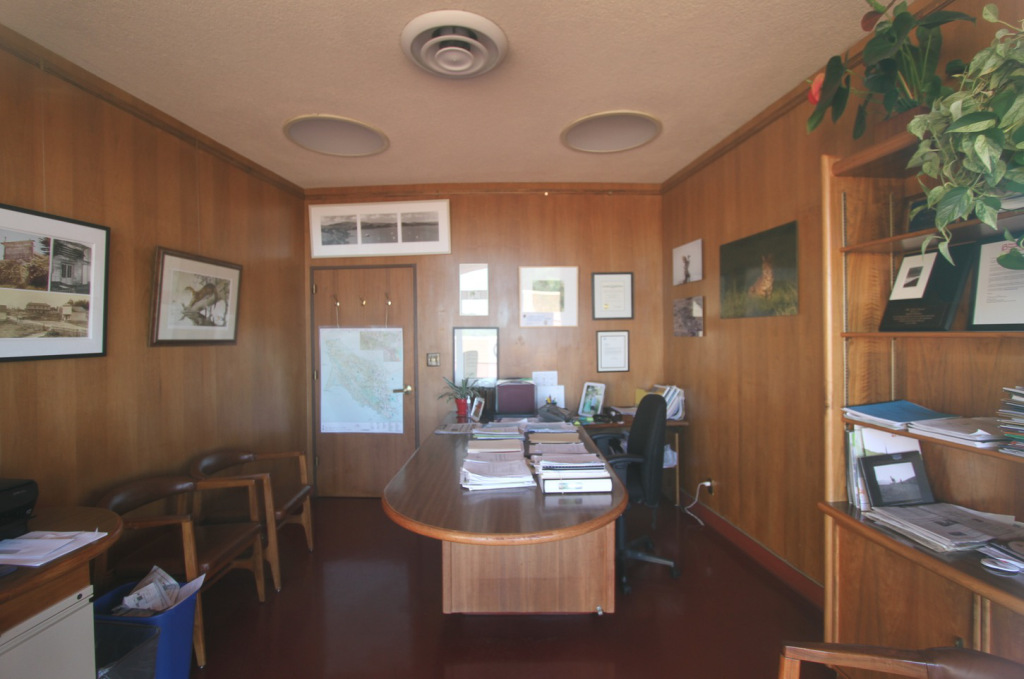
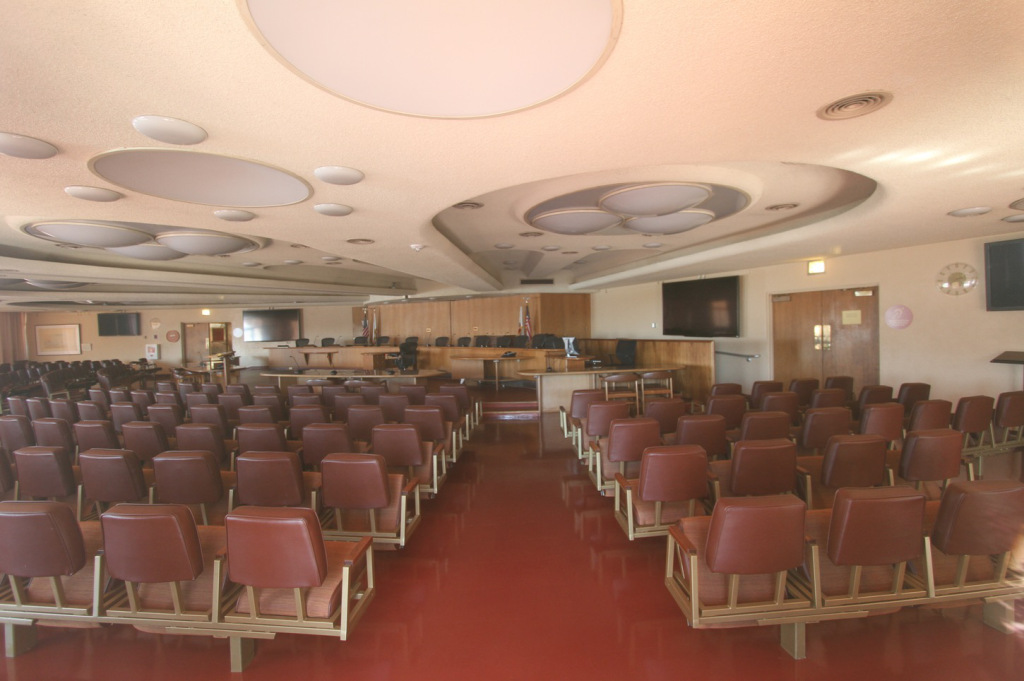
Exploring the periphery of the complex, a series of offices and meeting rooms appear, always with the same interior/exterior sensibility. Greenery and the outdoors are never out of view or more than a few steps away.
Unused remnants of previous customs linger in odd nooks throughout the building. Public telephone booths, newspaper stands, and office pigeonholes sit silently awaiting new vocations. An information kiosk once staffed to direct visitors is now redundant due both to the high cost of labor and the ubiquity of personal way-finding technology. Meanwhile, new challenges exist having to do with security protocols. How exactly is such a building fortified from current perceived threats? The recent crop of public buildings all look as though they were constructed using Israeli security experts – because they were. Buildings must evolve over time and this one is no exception.
One of the unintended consequences of the Broadacre City model is that far more cars, parking lots, and roadways are required to make it all work than anyone initially imagined. Every inch of flat land surrounding the Marin County Civic Center is paved. Over the years more land has had to be bulldozed into submission to accommodate more parking farther and farther from the building. Parking lots aren’t “nature” although every effort is made to cultivate shrubbery and tree islands to help mask the underlaying reality.
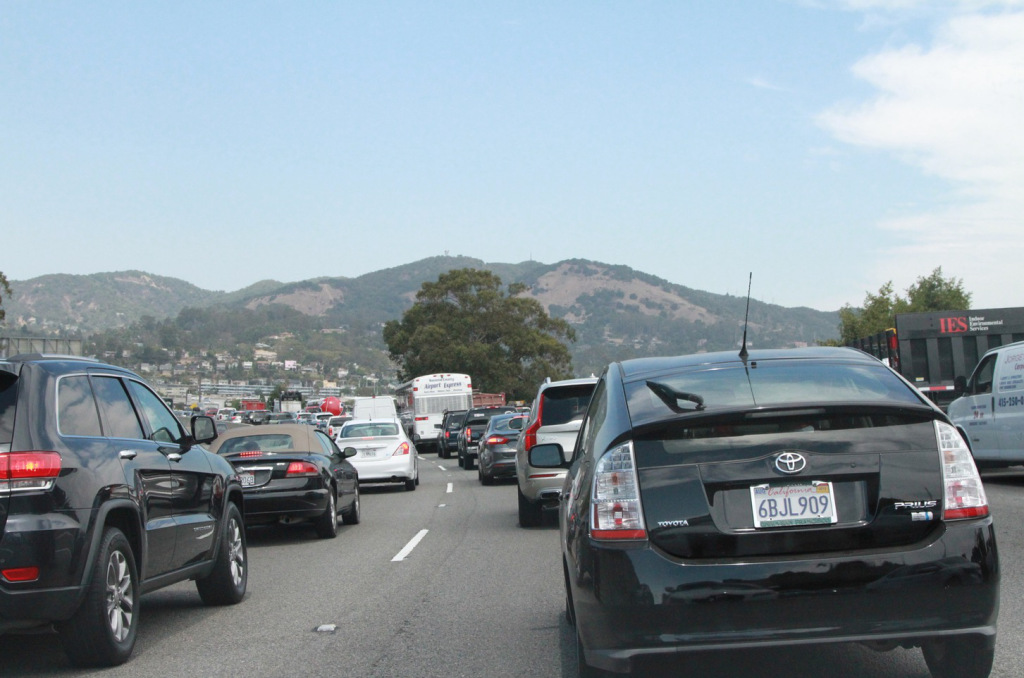
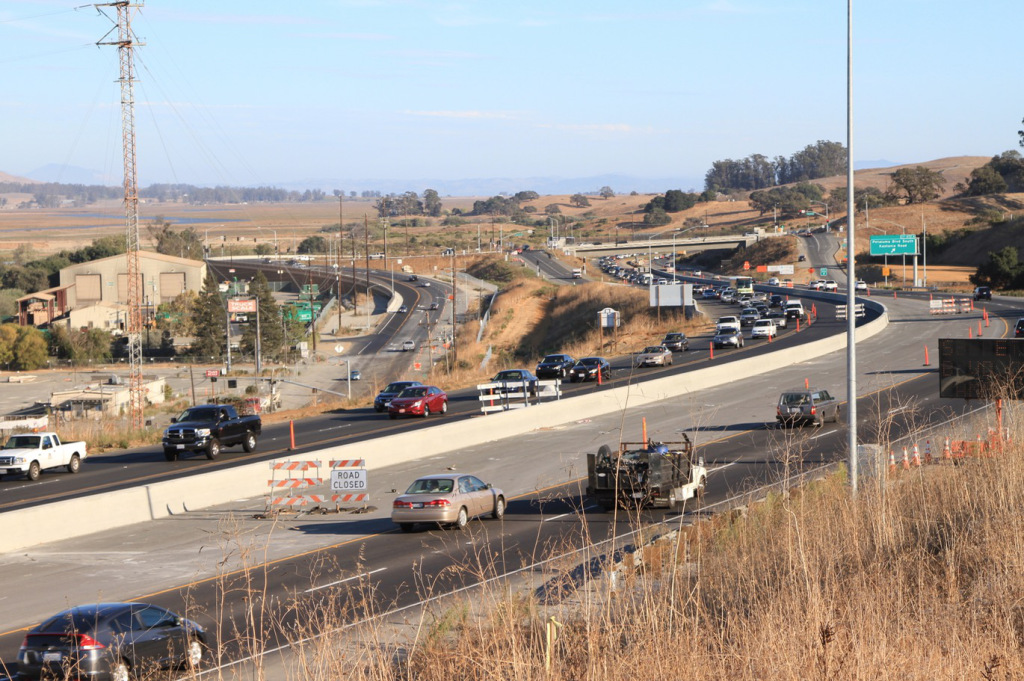
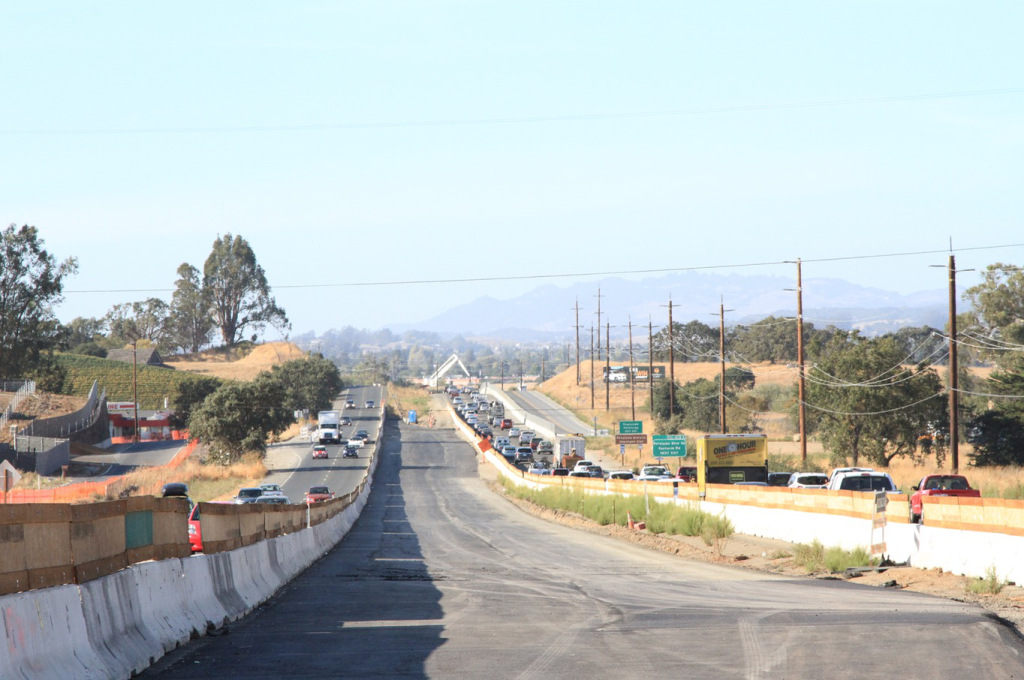
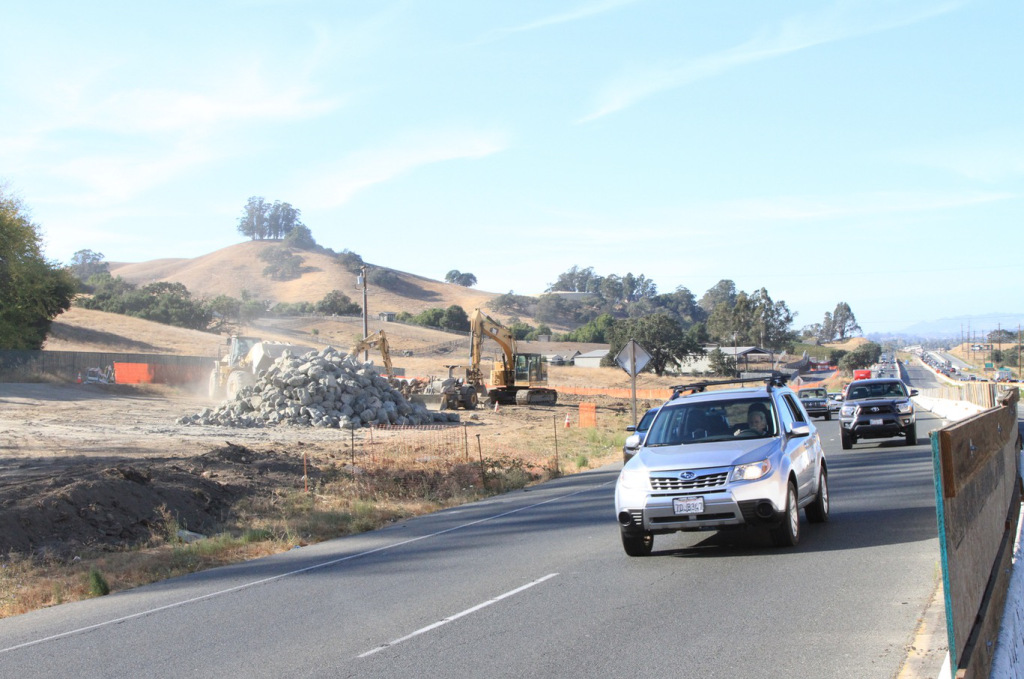
The need to expand road capacity and alleviate ever increasing traffic loads creates a dysfunctional dynamic. No one moves to Marin for an urban lifestyle. The area’s appeal is in its scenic beauty, private enclaves, and peaceful bucolic charm. You move to Marin to get away from the city. But the existing private realm – even in one of the richest zip codes in North America – doesn’t generate enough tax revenue to support all that attenuated public infrastructure. The roads, water and sewer systems… all of it is horrifically expensive. And it’s getting old and creaky.
The state and federal government have been able to pony up the required cash for highway expansion so far, but those days are numbered. Everyone up and down the funding chain is functionally insolvent and deep in debt. What was once a four lane highway is up to ten and twelve lanes in spots. So much for scenic vistas as you sit in rush hour traffic on your way to the Civic Center.
(All photos by the author)


